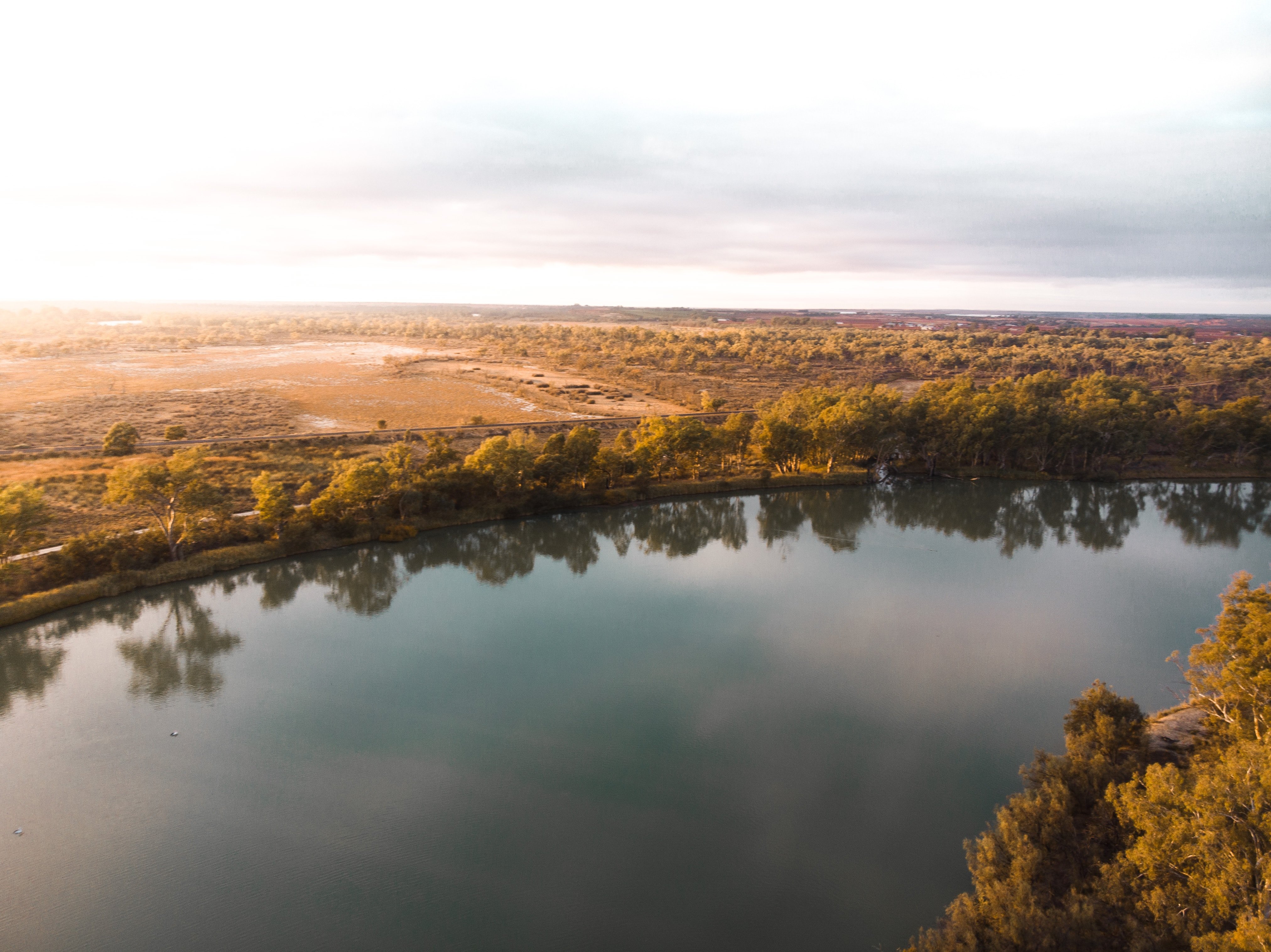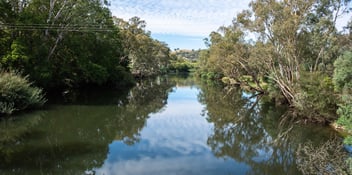Murray-Darling Basin facing changing risks to shared water

A large-scale review of the Murray-Darling Basin has found that risks to shared water within the system are changing, and researchers are calling for significant adjustments to be made to the Murray-Darling Basin Plan to manage emerging risks under increasingly uncertain conditions.
Published last year, A review of the risks to shared water resources in the Murray–Darling Basin details the results from the inquiry, which involved voluntary research output from 24 experts across 10 organisations.
ANU Fenner School of Environment and Society Professor Jamie Pittock said the review was launched two years ago to explore whether the risks to river inflows in the Murray-Darling Basin have changed since they were identified initially by CSIRO in 2006.
“During the Millennium Drought, there was great alarm at falling river flows. The Federal Government commissioned the CSIRO to identify the risks that might diminish the inflows into the rivers, beyond the immediate withdrawal point sources,” he said.
“CSIRO identified six risks that were reflected in the legal reforms that occurred with the Water Act in 2008. The risks identified included climate change, forest growth, groundwater, water infrastructure, water quality, and governance.
“It’s been 15 years since CSIRO did that work. We were keen to see whether new risks had emerged, whether the scale of some risks had diminished, and whether there were changing approaches to managing those risks.”
Pittock said the project intended to conduct a desktop review of the original risks to understand the knowledge gaps that need to be addressed ahead of the scheduled revisions of both the Water Act and the Murray-Darling Basin Plan in 2026-27.
“We asked each of the thematic research groups to address these three questions: What was our understanding of the risks in 2006? What is our understanding of these risks now? What are the knowledge gaps that should be addressed to best inform the revision of the Murray-Darling Basin Plan?” he said.
“We wanted to explore what policy options we have now to better manage these risks and what further research is needed to better quantify and respond to these risks.”
Changing risks
One of the key findings within the review is that risks to shared water resources in the Murray-Darling Basin are changing, Pittock said, with one of the most pressing being the continued decline of water availability.
“What we are seeing in the Murray-Darling Basin is some significant climatic and hydrological variability and change,” he said.
“Recently the MDBA reported that inflows had fallen by 39% in the first two decades of this century. This means we've got a basin plan based on 100% water availability in an environment where there might only be around 60% water availability.
“There are significant risks to water availability that need to be better understood and managed.
“Water availability in the southern basin is now clearly diminishing with climate change and needs to be actively managed. And we would say that the government can't stall on beginning this work until after the basin plan is reviewed.”
Pittock said that while some risks have changed, such as water availability, other risks identified in 2006 were overestimated: “For example, in plantation forestry, other risks have proven greater than projected, such as floodplain harvesting”.
“Similarly, the risks to groundwater and water quality are now much better understood, but need to be assessed more thoroughly if they are going to be managed appropriately.”
Interacting risks
Another key finding from the review was that the risks not only change but also interact, Pittock said, and that these interactions needed to be assessed if risks are to be managed effectively.
“These risks interact and that wasn't considered in 2006. The risks can interact positively or negatively. For example, diminished water flows and higher temperatures due to climate change will increase the frequency of cyannobacteria (blue-green algae) blooms. Risks to water quantity and quality remain as high as estimated in 2006, and this affects a very significant volume of water,” he said.
“It may dramatically change what we as a society can conserve or support, in terms of the environment or social and economic activities in the future. This resource must be appropriately managed.
“One example is that changing climate has knock-on effects in a number of ways. It might increase demand for groundwater use, thereby impacting aquifers.
“Importantly, a lot of current work is looking at the direct impact of climate change on water availability. But the assessments in the water space have not looked at how society responds to climate change and whether those adaptations have positive or negative impacts on water availability.
“All of these risk interactions need to be understood.”
Pittock said that, while monitoring efforts need to be ramped up, the need for further research should not deter the government from taking action now.
“None of us in the group of 24 authors of this review would say that more research should come before governance action,” he said.
“There is a need to invest in research within the key knowledge gaps that we've identified, but there is enough scientific knowledge now for governments to start making sensible policy decisions to minimise or manage those risks.”
New mindset
In order to address the changing and interacting risks, Pittock said there will need to be a shift in mindset towards assessing how the system’s water will and won’t be applied as there will not be enough water for everything.
“The current basin plan says that if we simply do some more water efficiency, we can have all of our ecosystem assets and we can sustain all of the socioeconomic uses of the water. This is now unrealistic thinking in terms of the amount of water that will be lost to these risks,” he said.
“There needs to be a change of mindset as we move into the next basin plan. It needs to be more of a triage plan that accepts that environmental and socioeconomic assets will be lost.
“We need to think through adaptation pathways to decide how to conserve flow dependent ecosystems. There won't be enough water going forward to conserve everything.
“And, as a society, we'll need to make hard choices about what can be conserved under changing water supply.”

